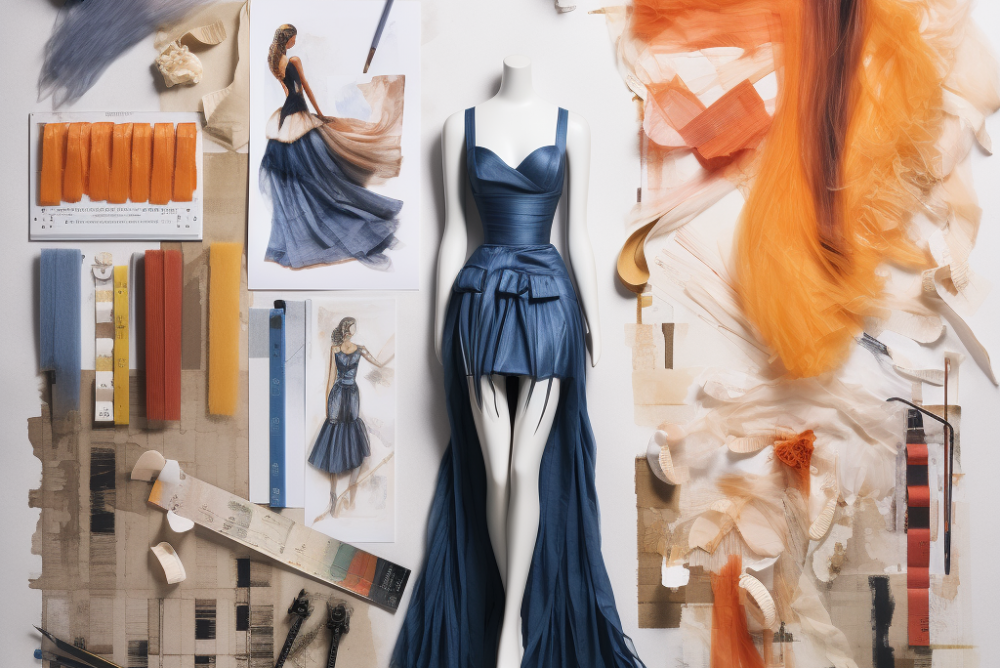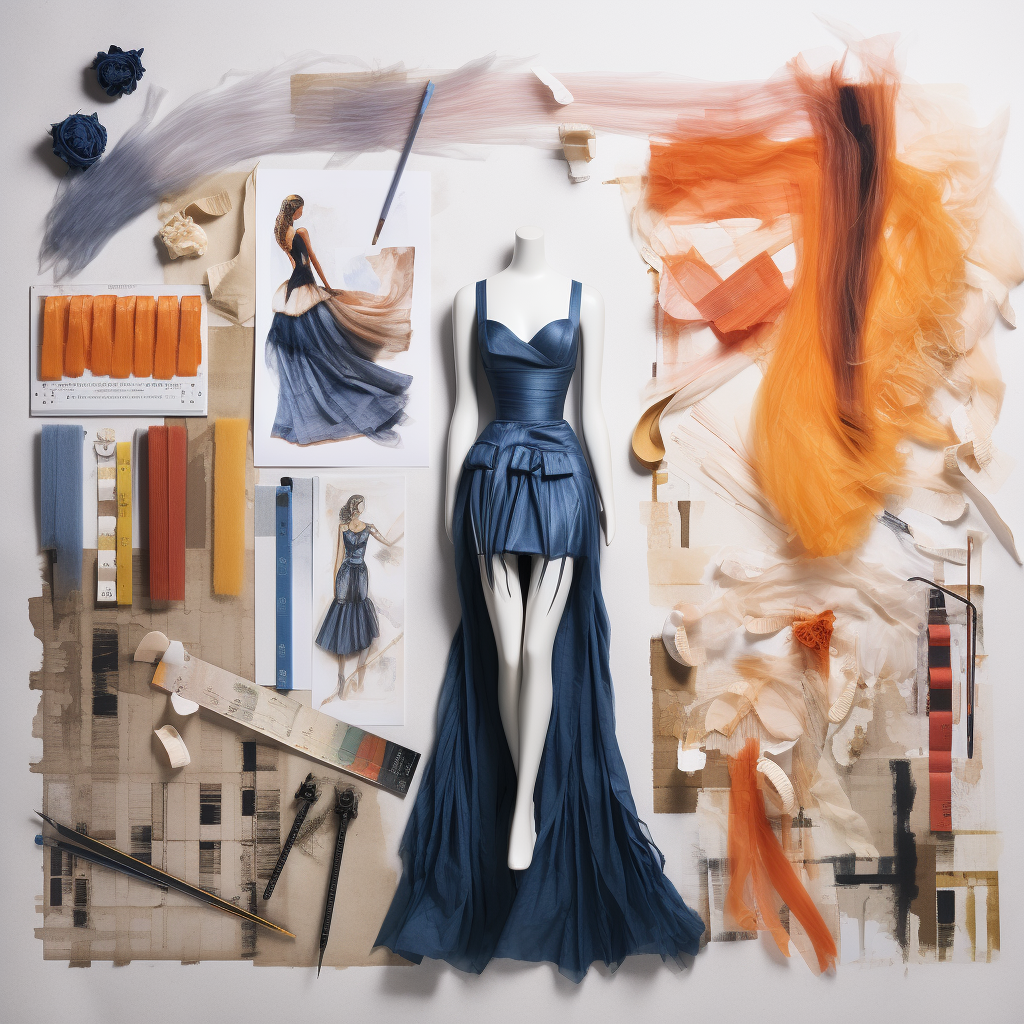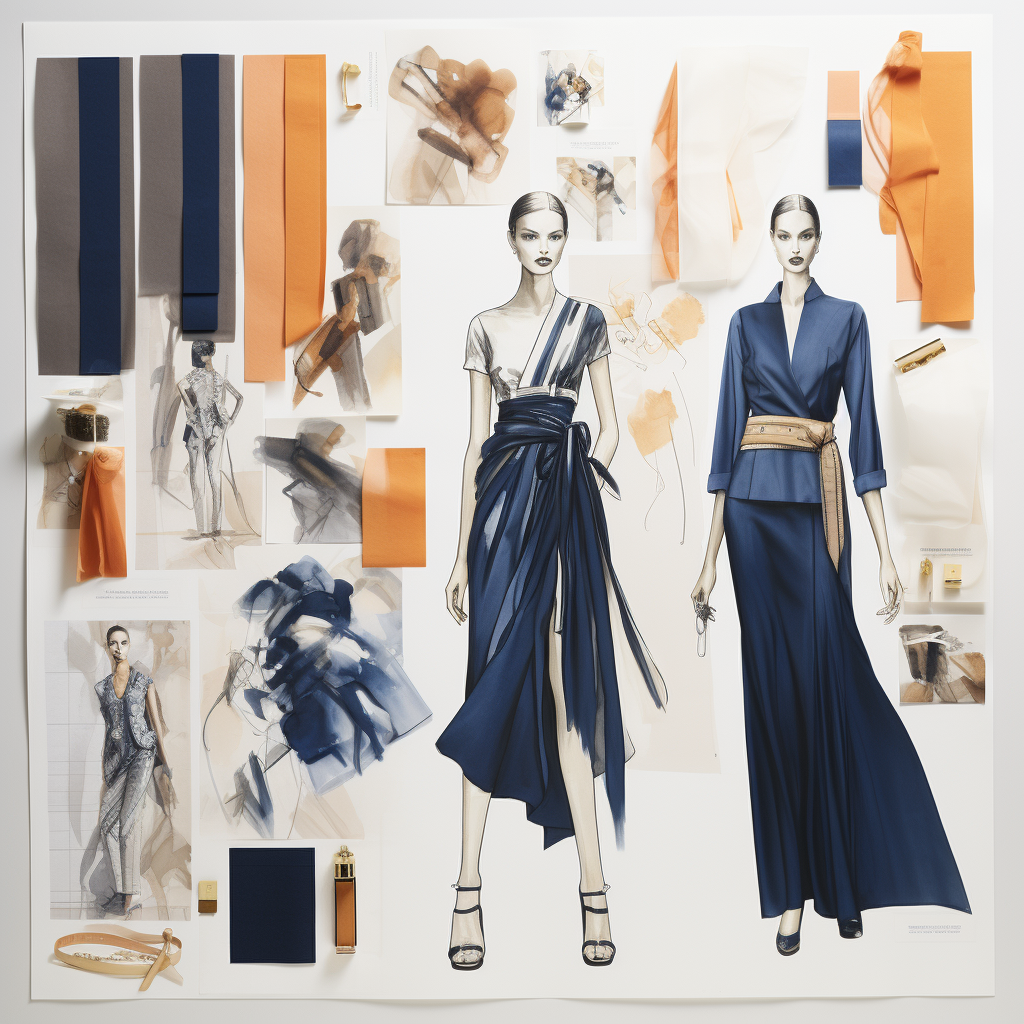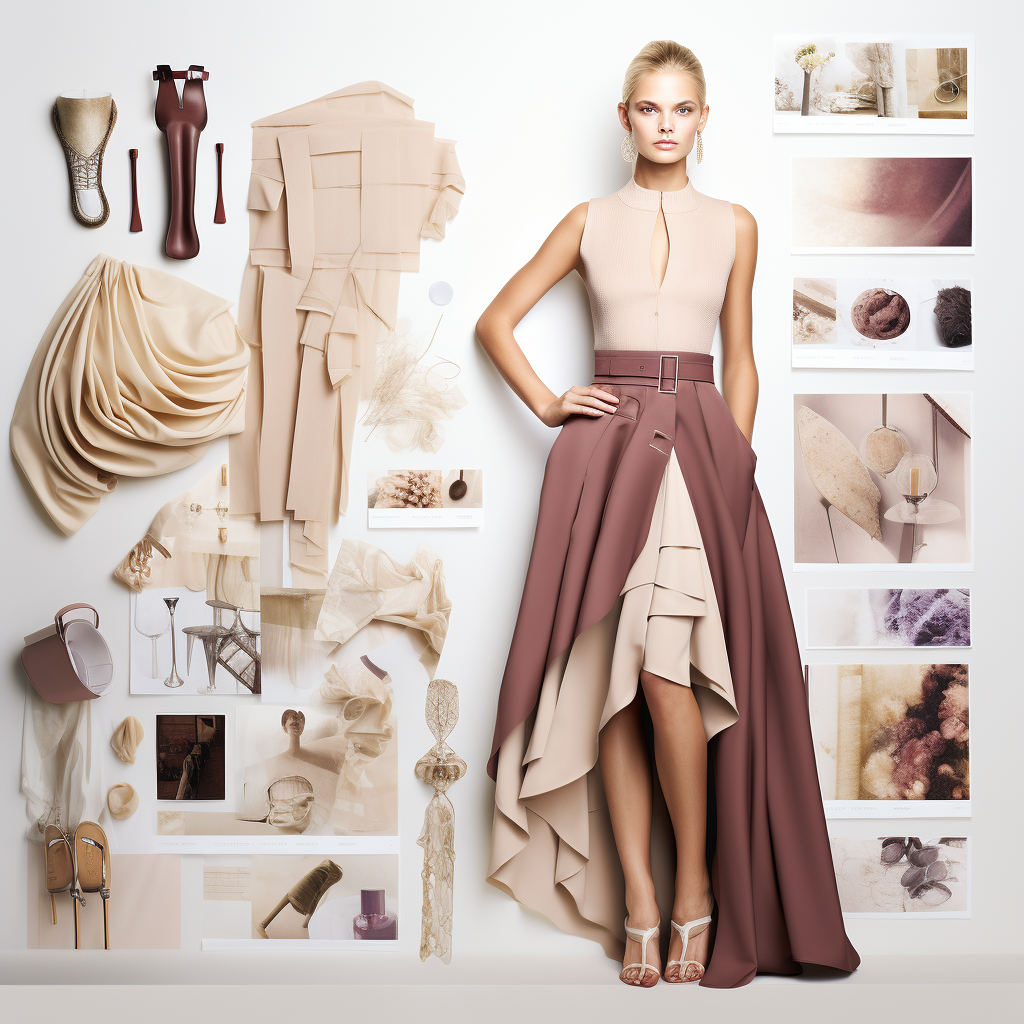A Comprehensive Guide to Crafting a High-Quality Fashion Collection


Fashion is more than just clothing; it's an expression of individuality, a reflection of culture, and a testament to the times we live in. With the industry undergoing significant shifts due to sustainability concerns, technological advancements, and evolving consumer demands, designers now have a grand stage to project their vision. However, creating a collection is not solely about producing visually appealing designs. It's about ensuring that the apparel stands the test of time in both style and durability.
The fusion of artistry and practicality has long been the challenge of the fashion industry. Whether you're an emerging designer aiming to make a mark or an established brand striving to maintain relevance, understanding the intricate details behind creating high-quality apparel is paramount. The significance of producing not just fashionable, but also functional and ethical clothing cannot be overstated. This guide delves deep into the foundations of creating exceptional apparel, providing insights into the elements that culminate in a successful fashion collection. With a focus on evergreen principles rooted in expertise, experience, authoritativeness, and trustworthiness, we're about to embark on a comprehensive journey through the world of fashion creation.
Understanding the Fashion Industry's Expectations
In an ever-competitive marketplace, understanding what the industry and your target audience expect from a high-quality apparel line is crucial. These expectations go far beyond just good-looking clothes; they encompass sustainability, innovation, wearability, and affordability.
Sustainability
The fashion industry is under growing scrutiny for its environmental impact. Brands that prioritize sustainable practices not only stand out but are also aligned with the ethical expectations of modern consumers. Materials like organic cotton, bamboo, and recycled polyester are gaining traction, and a commitment to responsible sourcing is a mark of quality.
Innovation
With technological advancements permeating the industry, consumers now look for features such as smart textiles, advanced fits, and even embedded technology. Being innovative doesn't necessarily mean high-tech; it could be a novel approach to design or exceptional craftsmanship that sets your collection apart.
Wearability
Your designs could be eye-catching, but if they aren't comfortable or functional, they'll be relegated to the back of the closet. Breathability, fit, and ease of care are aspects that consumers don't just appreciate but demand.
Affordability
While the term 'high-quality' often comes with a higher price tag, it's essential to strike a balance. Many consumers are willing to invest in long-lasting, versatile pieces but balk at the idea of unreasonably expensive items.
Understanding these key expectations serves as a compass directing all further actions—from material selection to the final touches. It’s not enough to meet these expectations halfway; a truly successful apparel collection will harmoniously blend them all.

The Significance of Material Selection
One of the most crucial stages in the creation of any apparel collection is the selection of materials. The fabrics you choose are not just the building blocks of your designs; they are also reflective of your brand's ethics, quality, and innovation.
Natural vs. Synthetic Fabrics
Natural fabrics like cotton, linen, and wool have a timeless appeal and tend to be breathable and biodegradable. On the other hand, synthetic materials such as polyester and nylon offer durability and are often more affordable. Each has its merits and downsides, so consider the needs of your target audience and the purpose of each garment when making your choice.
Sustainable Options
With sustainability gaining precedence, materials like organic cotton, recycled polyester, and Tencel have become valuable assets. These sustainable options offer quality without compromising ethics, a feature increasingly sought by consumers.
Functionality
Fabrics also serve functional purposes. For activewear, moisture-wicking and stretchable materials are preferred. For formal wear, you might opt for luxurious silks or fine wools. The material should enhance the garment's purpose, adding another layer of desirability to your collection.
Aesthetic Compatibility
The look and feel of a material can profoundly impact the overall aesthetic of a design. For example, chiffon offers a flowy, ethereal quality, while leather provides a tough, edgy vibe. Material selection should be in line with the overall theme and vision for your collection.
Supplier Relationships
Establishing a good relationship with reliable suppliers can make or break your collection. Factors like timely delivery, quality assurance, and the availability of unique materials are influenced by the supplier you choose.
Choosing the right materials goes beyond the tactile experience; it's an embodiment of the brand's values and promises. A well-thought-out material selection process forms the cornerstone of any high-quality apparel line, affecting everything from sustainability and innovation to affordability and wearability.
Innovations in Sustainable Fashion
As the world grapples with climate change and resource depletion, sustainable fashion has moved from being a niche concern to a mainstream requirement. Innovations in this sector are not just about reducing the negative impact but also about creating positive change. Below, we explore various innovations shaping sustainable fashion.
Circular Fashion
This concept involves creating clothes that can be fully recycled or composted at the end of their lifecycle. Brands like Eileen Fisher and Patagonia are pioneering circular fashion by offering repair services, recycling programs, and creating apparel from previously used garments.
Alternative Materials
There’s ongoing experimentation in sourcing alternative, eco-friendly materials. For instance, mushroom leather, spider silk, and even lab-grown materials are under development. Companies like Bolt Threads and MycoWorks are at the forefront of these alternative material innovations.
Low-Impact Dyeing Techniques
Traditional dyeing methods consume vast amounts of water and chemicals. New methods, like waterless dye technology and plant-based dyes, significantly reduce environmental impact. Brands like ColorZen and DyeCoo are revolutionizing the way fabrics are colored.
Ethical Labor Practices
Sustainability extends to the people who make the garments as well. Fair trade certifications, transparent supply chains, and ethical labor practices are crucial for any brand seeking sustainability credentials. Initiatives like the Fair Wear Foundation aim to improve labor conditions in the garment industry.
Tech-Driven Sustainability
The use of blockchain to track and verify the sustainability credentials of a garment is gaining traction. This enables consumers to trace the entire lifecycle of a product, adding a layer of trust and transparency.
Zero-Waste Design
Designers like Zero Waste Daniel are pioneering methods to use fabric scraps, off-cuts, and other "waste" to create new garments. These designs are not just eco-friendly but also unique, appealing to an audience that values both style and sustainability.
Innovations in sustainable fashion offer exciting opportunities to make a real difference, both ecologically and ethically. Implementing these practices in your fashion collection can substantially elevate its quality, appeal, and market competitiveness.
Balancing Aesthetics with Comfort
Creating a fashion collection that is both visually stunning and comfortable is a nuanced task that demands attention to various elements. A garment may be beautiful, but if it's not comfortable, it risks being a one-time wear or, worse, a wardrobe regret. Here's how to strike the right balance:
Design Ergonomics
Understanding the human body's movement and contours is vital in designing comfortable apparel. Factors like seam placement, stretchability, and garment weight can greatly influence how a piece feels when worn. Design ergonomics seeks to optimize these factors without compromising the visual appeal.
Fabric Engineering
Some fabrics naturally lend themselves to comfort. Cotton, modal, and jersey are breathable and soft against the skin. Incorporating these materials in parts of the garment that are in direct contact with the skin can enhance comfort.
Tailoring Techniques
Good tailoring is often the unsung hero behind a comfortable outfit. Techniques such as French seams, flat-felled seams, and bias binding not only make the garment durable but also eliminate internal rough edges that can irritate the skin.
Adaptive Fashion
With the rise of inclusive design, comfort also extends to ease of use. Features like magnetic closures, adjustable waistbands, and easy-grip zippers make garments more accessible and comfortable for a broader range of people.
Wear Testing
It's crucial to invest in extensive wear testing to fine-tune the balance between aesthetics and comfort. This step allows designers to make necessary adjustments before mass production.
Consumer Feedback
Ultimately, the wearer's comfort level is the true litmus test. Collecting and analyzing consumer feedback can offer invaluable insights for future designs. Many brands use social listening tools and post-purchase surveys to gather this type of information.
Achieving the right balance between aesthetics and comfort is a continuous process that involves various stakeholders—from designers and tailors to end consumers. When done correctly, this balance elevates a fashion collection from being merely eye-catching to becoming a cherished part of someone's wardrobe.

Importance of Quality Control and Testing
In the high-stakes world of fashion, where brands can rise or fall on the strength of a single collection, quality control (QC) and testing are non-negotiable. Ensuring that each garment meets the brand's quality standards is paramount for long-term success. Here's a look at key aspects of QC and why it's vital for creating high-quality apparel.
Pre-Production Quality Checks
Before mass production begins, prototypes are rigorously tested for fit, durability, and aesthetics. This step helps identify any potential issues early on, reducing the risk of mass-producing a flawed design.
In-Line Inspections
During the production process, it's crucial to regularly check the garments for consistency and quality. In-line inspections allow for real-time corrections, ensuring that issues are addressed as they arise rather than after the entire batch is produced.
Fabric and Material Testing
From colorfastness to shrinkage, the chosen fabrics undergo various tests. Methods like the Martindale test for abrasion resistance or the pilling test for fabric durability are industry standards.
Functionality Testing
Especially important for technical or performance wear, functionality testing examines whether the garment meets the specific claims made by the brand, be it water resistance, UV protection, or breathability.
Ethical and Sustainability Audits
Increasingly, quality control is extending to include ethical and sustainability criteria. Brands that adhere to these standards often undergo third-party audits to validate their practices, further enhancing their credibility.
Post-Production Quality Assurance
Even after the production phase, a random sampling of the garments undergoes a final round of checks. This stage is crucial for catching any last-minute issues before the collection hits the market.
User Feedback Loop
Post-launch, consumer feedback is actively sought and analyzed to inform future collections. Brands that pay heed to customer reviews often find this data invaluable for maintaining and improving quality.
Quality control and testing are exhaustive, meticulous processes, but they are the backbone of any reputable fashion brand. Ignoring this crucial phase can not only damage the brand's reputation but also result in financial loss due to recalls or unsold stock.
Engaging with Reliable Suppliers and Manufacturers
Creating a high-quality apparel collection isn't just about brilliant design and careful quality control; it's also dependent on the partnerships you cultivate with suppliers and manufacturers. The decisions made here can significantly influence the quality, sustainability, and even the ethical standing of your collection. Here's how to navigate this crucial aspect.
Evaluating Credibility
Before entering into a partnership, it's crucial to assess the credibility of a potential supplier or manufacturer. Look for certifications such as ISO 9001 for quality management systems or specific sustainability certifications like OEKO-TEX or GOTS if that aligns with your brand values.
Testing Material Samples
Always ask for and rigorously test material samples before making a bulk order. This exercise can prevent a great deal of disappointment and financial loss.
Negotiating Terms
Terms around production lead times, quality checks, and payment schedules must be negotiated upfront. Clear communication is essential to prevent misunderstandings that can lead to costly delays or compromised quality.
Sustainability and Ethics
If sustainability and ethical production are important to your brand, ensure that the manufacturer can comply with your standards. Ask for their sustainability reports, and if possible, conduct an on-site visit or third-party audit.
Collaboration and Flexibility
A good supplier doesn't just fulfill orders; they act as collaborators, helping to solve problems and optimize processes. Their flexibility can be invaluable when adapting to market trends or dealing with unexpected challenges.
Long-Term Partnerships
Building a long-term relationship with a reliable supplier often results in better pricing, priority during busy periods, and a collaborative approach to solving problems. It can also streamline the logistics and production processes, saving time and money.
Diversification
While it's advantageous to build long-term partnerships, it's also wise to have relationships with more than one supplier or manufacturer. This approach reduces dependency and offers a safety net should one supplier encounter issues.
By engaging with reliable and ethical suppliers and manufacturers, your fashion collection gains an edge in quality and credibility. This strategy requires due diligence and investment in relationship building, but the benefits far outweigh the costs.

Pricing and Positioning in the Market
Even a high-quality fashion collection can falter if not priced or positioned correctly in the market. This chapter provides insights on how to strategically set prices and carve out a niche for your brand, ensuring that the collection not only appeals to consumers but also retains a healthy profit margin.
Cost Analysis
Start by fully understanding the cost structure behind each garment, factoring in raw materials, labor, overheads, and shipping. A detailed cost breakdown helps in setting a realistic and profitable price point.
Competitive Pricing
Investigate how similar products are priced in the market. This research will help you position your collection in a way that's attractive to your target audience while still being competitive.
Price Elasticity
Understanding how sensitive your customer base is to price changes can help you adapt pricing strategies over time. Special promotions, seasonal discounts, or even price increases can be effectively managed with this knowledge.
Brand Positioning
The way your brand is positioned in the market will influence the pricing strategy. Luxury brands can command higher prices, but this also comes with an expectation of superior quality and service. Understand your brand's unique value proposition to better gauge how much consumers are willing to pay.
Psychological Pricing
Techniques like charm pricing (e.g., $19.99 instead of $20) can subtly influence consumer behavior. However, use this strategy carefully, as it may not align with all brand images, especially luxury or artisanal brands.
Value-Added Features
If your garments offer special features, such as innovative materials or ethical production methods, these can justify a higher price point. Make sure these value-added features are well-communicated to the consumer.
Monitoring and Adjusting
Once the collection is launched, closely monitor how it performs in terms of sales, customer feedback, and profitability. Be prepared to adjust pricing and marketing strategies based on real-world performance data.
Pricing and positioning are dynamic aspects of a fashion collection that can evolve based on market trends, consumer feedback, and brand development. It's essential to approach these strategically to optimize both consumer appeal and profitability.
Effective Marketing Strategies for Your Fashion Collection
Once you've meticulously designed, produced, and priced your apparel collection, the next crucial step is marketing it effectively. This chapter offers a comprehensive guide on how to create a buzz, attract potential buyers, and make your brand stand out in a crowded marketplace.
Brand Storytelling
A compelling narrative around your collection can make a profound impact. Whether it's the sustainability aspect, the inspiration behind the designs, or the craftsmanship involved, a well-crafted story adds depth and personality to your brand.
Social Media Engagement
Platforms like Instagram, Pinterest, and TikTok are particularly effective for visual industries like fashion. Leverage these channels to showcase your collection, collaborate with influencers, and engage directly with your audience.
Email Marketing
Despite the buzz around social media, email marketing remains an effective tool for nurturing customer relationships. Use this channel to announce new collections, special promotions, or exclusive content.
SEO and Content Marketing
Having a blog on your website that covers relevant topics can significantly improve your search engine rankings and drive organic traffic. It also establishes your brand as an industry authority.
Public Relations
Getting featured in fashion magazines, blogs, or other media outlets can give your brand a significant credibility boost. Building good relationships with journalists and influencers in the industry can facilitate this.
Partnerships and Collaborations
Teaming up with other brands or individuals can help you tap into their customer base while offering something new and exciting to your own. Just ensure that any partnership aligns with your brand values and messaging.
Customer Reviews and Testimonials
Encourage satisfied customers to leave reviews or testimonials, which can be featured prominently on your website and social media. This form of social proof can greatly influence new customers.
Analytics and Adaptation
Lastly, it’s crucial to keep an eye on various analytics tools to measure the effectiveness of your marketing strategies. This data will help you adapt and refine your efforts for even better results in the future.
Well-executed marketing strategies can amplify the reach and appeal of your fashion collection, converting interest into sales. This is an ongoing effort that evolves as your brand grows, informed by data, customer feedback, and market trends.
Navigating the Challenges and Future Trends in the Fashion Industry
The fashion industry is ever-changing, influenced by a host of external factors like technology, consumer behavior, and global events. As a designer or brand owner, staying ahead of these changes is critical for long-term success. This chapter explores the challenges you might face and how to adapt to future trends.
Fast Fashion vs. Sustainable Practices
The rise of fast fashion presents a challenge for brands committed to quality and sustainability. Staying competitive requires a balance between speed-to-market and responsible practices. Brands that successfully merge these elements often employ a 'slow fashion' model, emphasizing quality and ethics without compromising style.
Digital Transformation
From 3D-printed garments to AI-assisted design processes, technology is rapidly transforming the industry. Embrace digital tools that can enhance your design, production, and marketing efforts, but always with a focus on maintaining the human element that is the core of fashion.
Consumer Behavior
The modern consumer is informed, discerning, and often, values-driven. Brands must be transparent about their manufacturing practices, materials used, and the people behind the products. This emphasis on authenticity resonates with today's consumer and can set your collection apart.
Globalization and Localization
The global reach of e-commerce opens up new markets but also new challenges. Understanding local fashion sensibilities, cultural norms, and economic factors are crucial for successful international expansion.
Economic Fluctuations
Be prepared for economic downturns, which can hit discretionary spending like fashion particularly hard. Flexible business models that can scale up or down based on market conditions are more resilient.
Inclusivity and Diversity
A growing emphasis on diversity and inclusivity has made 'one-size-fits-all' an outdated concept. Future-forward brands are embracing a broad spectrum of sizes, genders, and cultural identities in their designs.
Intellectual Property
As your brand gains popularity, protecting your unique designs becomes vital. Understanding copyright laws and taking steps to secure your intellectual property can save you from costly legal battles later.
Ethical and Social Responsibility
With rising consumer awareness, social responsibility is no longer optional. Fair labor practices, animal welfare, and environmental sustainability are not just buzzwords but essentials that can make or break your brand's reputation.
Navigating the challenges and adapting to future trends is a continuous process, requiring vigilance, agility, and a willingness to evolve. Brands that succeed in this dynamic landscape are those that combine innovation with a deep respect for the timeless elements that make fashion an enduring form of human expression.
Conclusion
Creating a high-quality apparel collection is an intricate process involving a multitude of steps, from the first conceptual sketches to the final marketing strategy. Each decision—whether it's choosing the right fabric, aligning with the right manufacturers, or setting the perfect price—has a significant impact on the final outcome. As you venture into the competitive world of fashion, understanding the nuances of each stage can make a monumental difference in your brand's success and longevity.
In this guide, we've traversed the multiple facets of fashion collection creation:
- From conceptualization and design, where imagination meets the first strokes of reality.
- To material selection and quality control, the backbone of any apparel collection that aims to stand the test of time.
- Through production logistics and supplier relationships, the conduits that transform your vision into tangible products.
- To pricing strategies and market positioning, ensuring that your collection not only resonates with your target audience but also brings in a healthy profit.
- And finally, marketing and navigating the ever-evolving fashion landscape, which are critical for staying relevant and successful in this dynamic industry.
The journey may be complex, but it's also incredibly rewarding. By approaching each step with meticulous care and a clear strategy, you'll be well on your way to establishing a collection—and a brand—that embodies quality, sophistication, and timeless appeal.
Thank you for reading this comprehensive guide. Whether you're an aspiring designer or a seasoned entrepreneur, we hope these insights equip you with the knowledge and tools needed to create an exceptional fashion collection. Here's to your success in the glamorous yet demanding world of fashion.





-500x500.jpg)
-500x500.jpg)
-500x500.jpg)
-500x500.jpg)
-500x500.jpg)